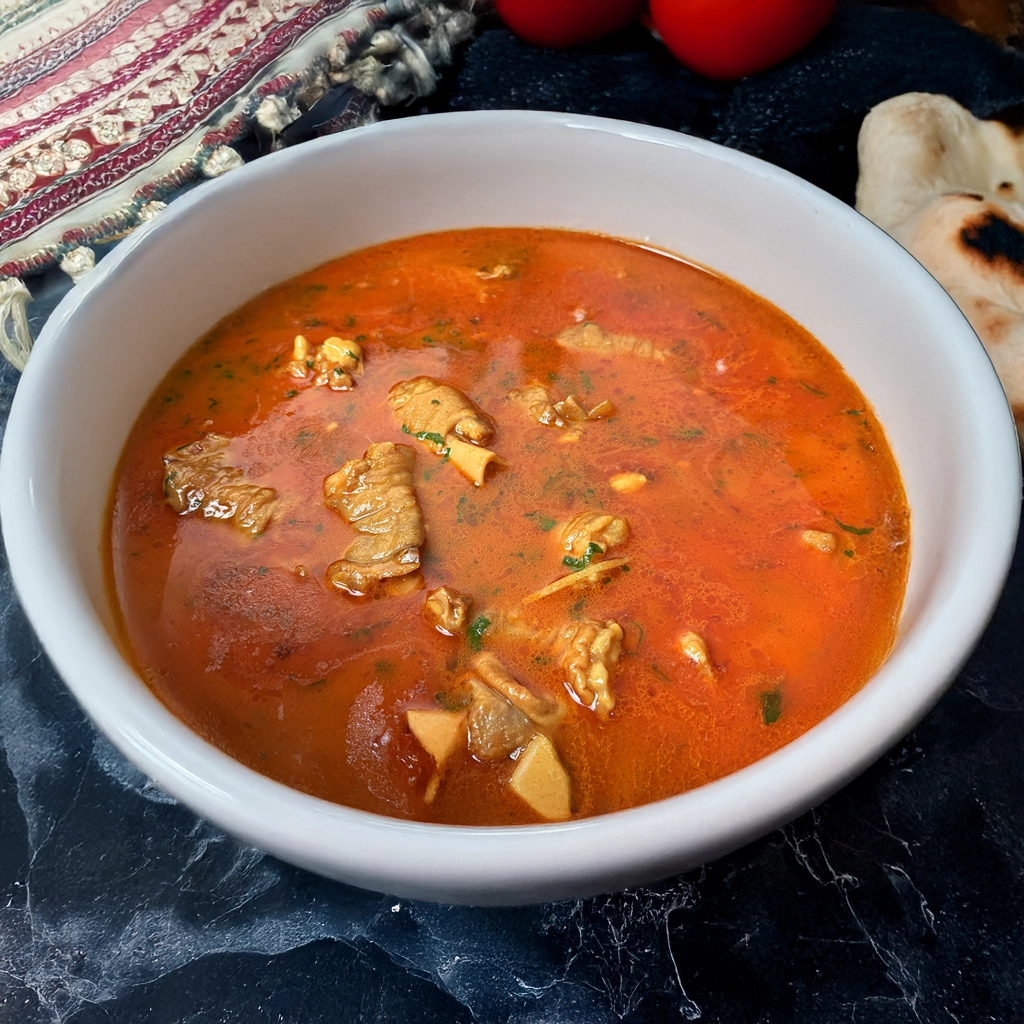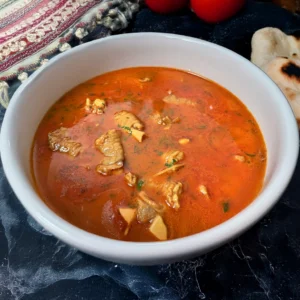
Mutton Paya is a traditional South Asian dish that is known for its rich and flavorful broth, tender pieces of meat, and melt-in-your-mouth tendons. This dish has been enjoyed for centuries, with roots tracing back to the Mughal era in India. The word “Paya” comes from the Hindustani language, meaning “leg”.
Originally a dish enjoyed by royalty, Mutton Paya has now become a popular delicacy enjoyed by many across the Indian subcontinent and beyond. The preparation of this dish involves slow-cooking mutton trotters in a blend of aromatic spices and herbs, resulting in a dish that is both hearty and satisfying.
However, despite its delicious flavors, Mutton Paya is not a recipe for the faint of heart. The process of preparing this dish can be quite labor-intensive and time-consuming, requiring patience and attention to detail.
From cleaning and prepping the trotters to simmering them for hours on end, this dish truly tests the culinary skills of even the most experienced chefs.
Trotters: Also known as paya, trotters are a cut of meat that come from the lower part of the animal’s leg. They are known for their gelatinous texture and rich flavor, making them a popular choice for soups and stews.
Oil: Oil is used as a cooking medium in this recipe to sauté the onions, ginger paste, and garlic paste. It helps to prevent the ingredients from sticking to the pan and adds flavor to the dish.
Onions: Onions are a staple ingredient in many savory dishes and add flavor and texture to the Mutton Paya. They are typically sautéed until translucent and caramelized to bring out their natural sweetness.
Ginger Paste: Ginger paste is made from crushed or finely grated ginger root. It adds a warm, spicy flavor to the dish and is commonly used in Indian cooking for its aromatic properties.
Garlic Paste: Garlic paste is made from crushed or finely minced garlic cloves. It adds a pungent, savory flavor to the dish and pairs well with the other spices and aromatics in the recipe.
Cloves: Cloves are a pungent spice with a strong, sweet flavor. They add warmth and depth to the Mutton Paya, enhancing the overall taste of the dish.
Cinnamon Stick: Cinnamon sticks are sweet and fragrant, adding a warm, spicy flavor to the dish. They also impart a subtle sweetness that complements the savory elements of the recipe.
Bay Leaf: Bay leaves are aromatic leaves commonly used in cooking to add flavor to soups and stews. They have a subtle, earthy taste that enhances the overall complexity of the dish.
Black Cardamom: Black cardamom pods have a smoky, earthy flavor that adds depth to the Mutton Paya. They are commonly used in Indian cooking for their bold, aromatic qualities.
Tomatoes: Tomatoes add acidity and sweetness to the dish, balancing out the rich flavors of the meat and spices. They also help to thicken the sauce and add a vibrant color to the final dish.
Salt: Salt is a crucial seasoning that helps to enhance the flavors of the other ingredients in the recipe. It brings out the natural savory elements of the dish and helps to balance the overall taste.
Chilli Powder: Chilli powder adds heat and spiciness to the Mutton Paya. It can be adjusted to taste depending on the desired level of spiciness in the final dish.
Turmeric Powder: Turmeric powder adds a vibrant yellow color to the dish and has a warm, slightly bitter flavor. It is commonly used in Indian cooking for its earthy undertones.
Cumin Powder: Cumin powder has a warm, nutty flavor that adds depth to the dish. It pairs well with the other spices and aromatics in the recipe, enhancing the overall taste.
Black Pepper: Black pepper adds heat and a spicy kick to the Mutton Paya. It also helps to balance out the other flavors in the dish and adds a layer of complexity.
Coriander: Coriander, also known as cilantro, adds a fresh, citrusy flavor to the dish. It is commonly used as a garnish to add brightness and a pop of color to the final presentation.
Ginger Julienned: Julienned ginger adds a subtle, spicy kick and a crunchy texture to the Mutton Paya. It is used as a garnish to add a pop of flavor and visual appeal to the dish.
Green Chillies: Green chillies add heat and a fresh, spicy flavor to the dish. They can be adjusted to taste depending on the desired level of spiciness in the final Mutton Paya recipe.
Mutton Paya is a delicious and nutritious dish that pairs perfectly with naan or rice. Here are some serving suggestions and variations to elevate your Mutton Paya recipe:
Whether you stick to the traditional serving suggestions or experiment with new variations, Mutton Paya is sure to be a crowd-pleaser at your next meal. Enjoy this flavorful and aromatic dish with your loved ones for a truly satisfying dining experience!
Mutton Paya is a popular South Asian dish made from goat or lamb trotters cooked in a rich and flavorful gravy.
To prepare Mutton Paya, goat or lamb trotters are cleaned and boiled with various spices and seasonings until they are tender. The dish is then garnished with fresh herbs before serving.
Mutton Paya has a rich and flavorful taste, with the trotters becoming tender and gelatinous from the slow cooking process. The spices add depth and complexity to the dish.
Mutton Paya is a nutrient-dense dish, as the trotters are high in protein, collagen, and essential minerals. However, it is also high in fat, so it should be enjoyed in moderation as part of a balanced diet.
Mutton Paya is believed to have various health benefits, including improving joint health, boosting collagen production, and providing essential nutrients for overall well-being.
Mutton Paya is typically served hot with naan, rice, or bread. It is often enjoyed as a main dish or as a hearty meal on its own.
Yes, Mutton Paya can be made in advance and reheated before serving. In fact, many people believe that the flavors of Mutton Paya deepen and intensify when allowed to sit for a day or two.
Here are some more recipes for you to enjoy! If you my recipes don’t forget to rate and leave a comment.
If you have any recipe suggestions, please do not hesitate to ask me. A great way to stay in contact with me is through Instagram, Facebook, Twitter and YouTube. Don’t forget to tag me @CookwithNabeela in your recipe photos!

Subscribe now to receive my latest recipes directly in your inbox. Stay up-to-date and never miss out!

I love to cook! I want to share with you my favourite, delicious family-friendly recipes. I want to inspire you to create fantastic food for your family every day.
Latest comments (1)